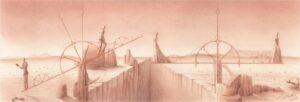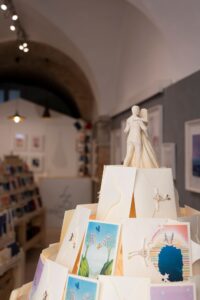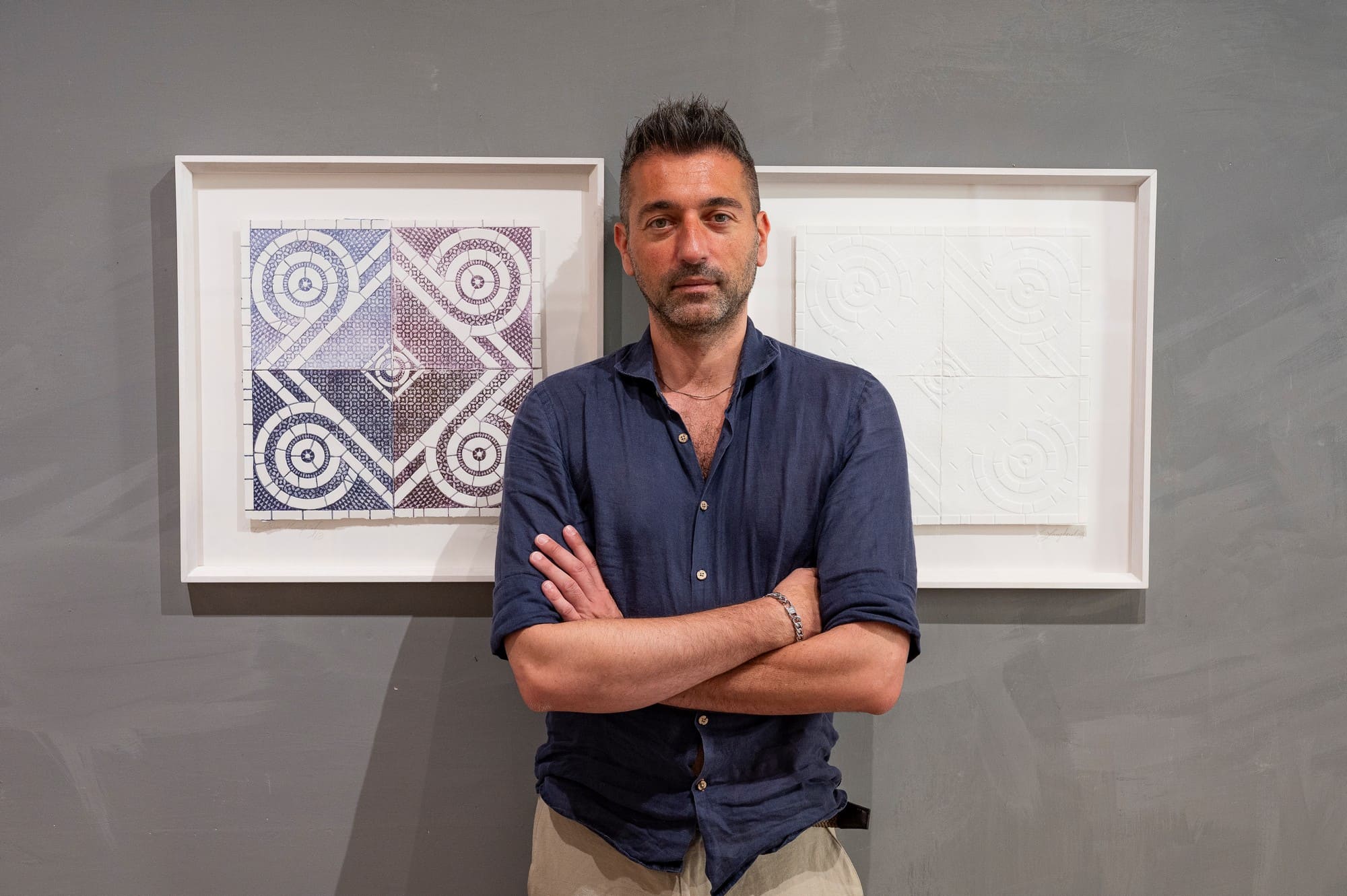By Simone Bandini
Perfect Crasis of Art and Engineering in Lorenzo Zangheri’s Vision of the World
 In this exclusive interview, we have the pleasure of talking with Lorenzo Zangheri, artist and engineer from Spoleto, born in 1978. His operational ability that skilfully combines technical rigor and artistic creativity immediately catches the eye. Lorenzo tells us about his path, his vision of art as a conceptual and scientific act – the delicate balance he tries to represent between human fragility and metaphysical order. A journey through engineering, art and the evocative power of detail, which reveals a world where the precision of the stroke dialogues with the extemporaneousness of the imagination.
In this exclusive interview, we have the pleasure of talking with Lorenzo Zangheri, artist and engineer from Spoleto, born in 1978. His operational ability that skilfully combines technical rigor and artistic creativity immediately catches the eye. Lorenzo tells us about his path, his vision of art as a conceptual and scientific act – the delicate balance he tries to represent between human fragility and metaphysical order. A journey through engineering, art and the evocative power of detail, which reveals a world where the precision of the stroke dialogues with the extemporaneousness of the imagination.
Simone Bandini: How do engineering and art combine in your work? Do you recognize yourself in conceptualism as a creative act?
“Lorenzo Zangheri: Today I define myself as an artist who is an engineer for a living, without ever denying my technical and scientific training. Engineering taught me analysis, development and resolution, using a method in every situation. This approach might seem sterile if applied to my artistic work, but I cannot deny that when I intend to depict a theme, the method becomes a tool again. Conceptualism is central: each work is born from a communicative intent, and therefore of sharing; Whether it is a concept, a comparison or a thought, my final work will always be a synthesis of harmony and coherence, where every symbolism has had a precise and desired use”.
How does your ‘academic’ and ‘professional’ background influence your works?
“My attention to detail derives precisely from the operational discipline of technical drawing, where precision is fundamental. I use different line weights to highlight important or secondary parts, just like in a technical drawing. This method makes my works immediately readable and communicates insights and concepts with extreme clarity. Even the choice of materials and techniques, such as the ‘sanguigna‘, is linked to a methodological tradition – capable of giving my works both an artistic and technical, both aesthetic and functional dimension”.

In your works a reflection on human fragility and precariousness often emerges. How do you represent it concretely?
“Fragility and precariousness were themes that challenged me deeply and that I try to translate both in the figure and in the material itself of the work. The delicacy of the stroke, the nuances that sometimes seem to fail or return, express this unstable condition. Precision and decisiveness coexist with a sort of tension, of precarious balance. This reflects the human condition, which is always suspended between order and chaos, between light and shadow.

“You spoke of a very significant work, “Hope and Trust”. What is its history and meaning?
“This work was born from a heated confrontation with a friend – who argued that man should do without hope and live only on trust. I, on the other hand, believe that hope is an essential engine (also at the basis of Western thought and Christianity, ed.): I therefore represented two wandering boats on a globe and in search of mutual contact – a symbol of balance and the search for meaning, amid uncertainty. It is an image that had a natural perception by the viewer, as it speaks of something universal, of that tension between desire and reality that we all experience”.
 Often as an artist you are associated with surrealism. How do you relate to this current?
Often as an artist you are associated with surrealism. How do you relate to this current?
“Yes, I am often asked if I am a surrealist or if I am inspired by De Chirico. In reality, my work always starts from a precise idea, from a concept that I want to express, then often translated into a figure using structures, tie rods and machines. Surrealism can be a reductive label, because in my case there is a strong design intent of the concept, which derives a priori from my technical background. Fantasy and imagination are there, but they are always governed by a methodological and scientific instinct”.
Can you give an example of how this method translates into a concrete project?
An example is this work, “Equilibrium”, which represents the meeting of two souls on an abyss: that abysmal distance that often separates two people – as well as the attempt to overcome it. I imagined two structures that must mutually commit themselves to meet, renouncing their masks and prejudices. The figurative project closes on its own, finding an engineering solution of encounter and passage. This creative process stems from deep reflection and rigorous analysis, not from a simple surrealist suggestion.
“How does the public react to your works? And how has your research changed over the years?
“The public who enters the gallery is often fascinated by the world I propose, perceiving that behind each figure there is a message, a story. It happened to me that I was asked for smaller versions of the works, and from there a new category of artistic research was born: gift art, whose main production concerns greeting cards and photolithographs, in fact small figurative poems. This allowed me to reach a wider audience, without sacrificing the conceptual depth of the images”.
 “What are the current and future projects and exhibitions?
“What are the current and future projects and exhibitions?
“In recent years I have worked a lot to expand my collection with subjects that are accessible and appreciable all year round, not just on special occasions. I am planning to participate in two trade fairs: in Bologna in September and in Milan in January. In addition, I am developing a new series of engravings that I want to propose in a more figurative and communicative way, to enhance this technique as an expression of art, laboratory, slowness and poetry. These are projects that confirm my vocation for figurative communication, combining tradition and innovation”.
Lorenzo Zangheri represents a unique example of how engineering technique can merge with art, in a continuous dialogue between reason and imagination. His weltanschauung is made up of profound themes such as human fragility, the balance between light and shadow, and the value of hope, always with a methodical but fantastic touch. His work invites us to rediscover the ability to interpret images and symbols, in a world that has forgotten this intuitive, primordial and archetypal ability. Following its path, we open up to a new dimension of beauty and construction of meaning, where every detail expresses an absolute value and is revealed in the narrative – an individual and, at the same time, systemically poetic entity.
Info: Lorenzo Zangheri’s Art Gallery is in Spoleto, Corso Mazzini 60 / www.lorenzozangheri.it / info@lorenzozangheri.it / Tel-Whatsapp: 333 9046113
